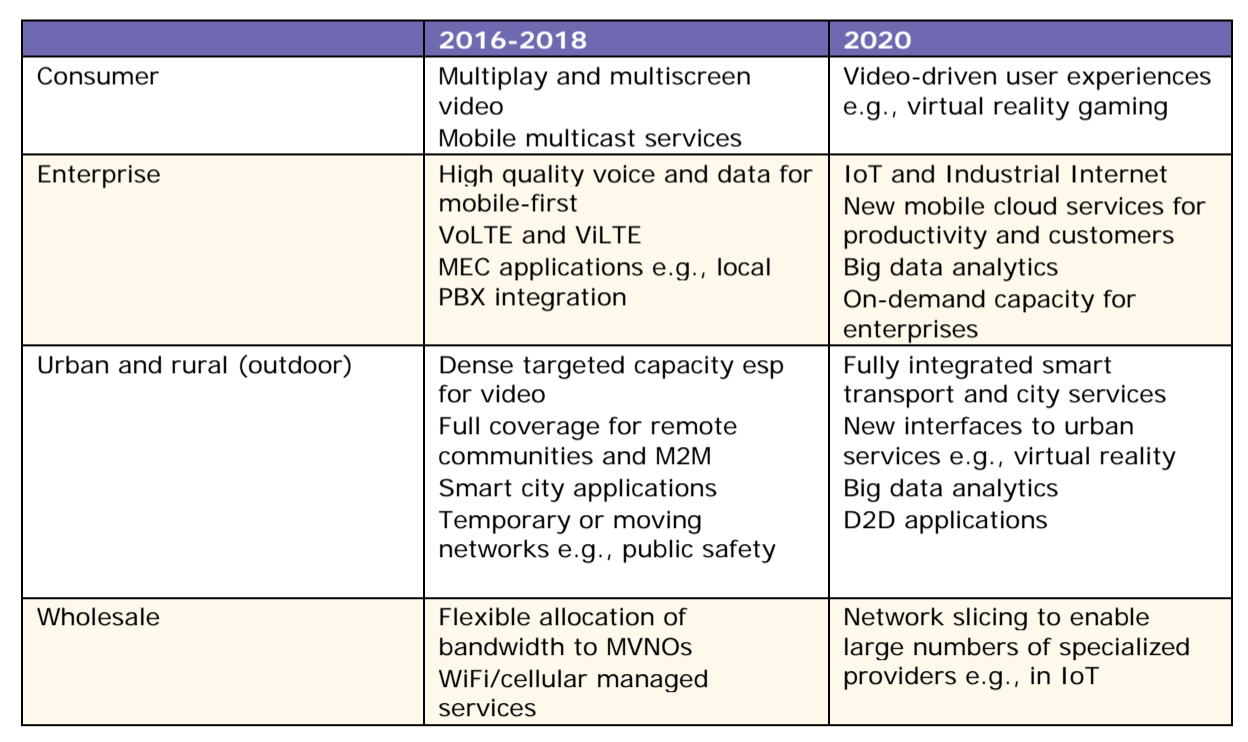A new report from the Small Cell Forum titled “HetNet and SON Foundations” includes a poll of tier-one and tier-two operators, two-thirds of whom indicated heterogeneous networks would be “very important” or “critical” to business objectives through 2020.
The survey, conducted by Rethink Technology Research in Q1, covered 72 mobile network operators. The vision of a true heterogeneous network will require architectural support for multiple radios, multiple spectrum bands and multiple domains, along with self-optimizing network techniques, virtualization, integrated management and cloud and edge computing, according to the Small Cell Forum.
Survey respondents identified use cases and applications that will require hetnets, and took a time-tiered approach that divides the needs into the 2016-2018 timeframe and by 2020. Here’s a graphic summarization:

Small Cell Forum wrote the group is “committed to a program, which puts building blocks in place to support current market drivers, and to address challenges to deployment – but which are also open and adaptable, so that operators can invest now in platforms, which will later be able to support unforeseen new use cases and 5G.”
Emerging SON technology is pegged as a key aspect of future hetnets, according to the report. The concept of small, albeit high-capacity, coverage areas means lots of hardware; that’s where SON comes into the picture.
“SON will be an essential enabler of dense hetnets, because it will be impractical to optimize large numbers of small access points – whether metrocells, Wi-Fi [access [points], distributed radios or [distributed antenna system] antennas – without a considerable degree of automation and flexibility,” the Small Cell Forum noted. “The rise of [virtual radio access networks] will intensify this interest among carriers, and give rise to new categories such as Cloud SON. The latter will aim to align the SON domain with the move towards centralizing and virtualizing network intelligence, turning it into a full network operating system, which can predict cause and effect, and coordinate responses, dynamically.”

Hetnets evolution will rely on SON technology to enable scale
ABOUT AUTHOR
